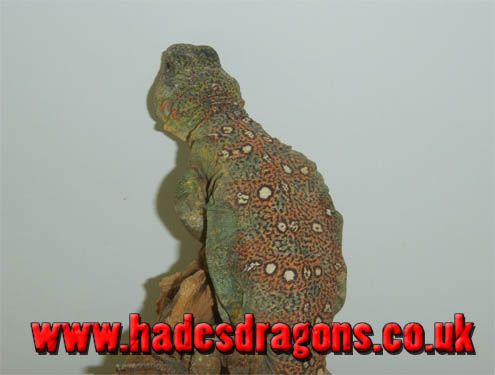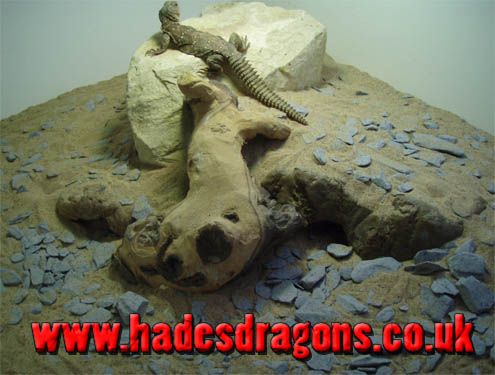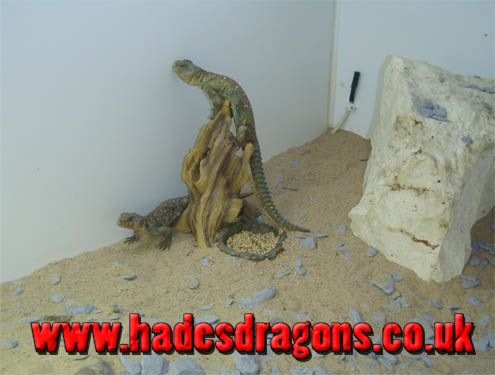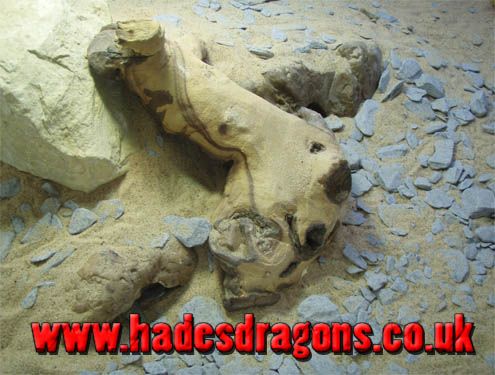Just though I'd put on a couple of photos of these two, which arrived last night (thanks to "X Danielle X" and Sam the Van Man).
I've set thing up with a similar principle to how I set up my geyri pair - they've got plenty of places to hide, high UV levels (MVB and UV tube), and sand/slate for substrate. Again the idea is to give them maximum security, in the hopes of getting them breeding in a year or two's time (the geyri thread can be seen here: http://www.reptileforums.co.uk/forums/lizard-pictures/472236-uromastyx-geyri-yellow-their-setup.html)
Male ("Malek"):
![Image]()
Female ("Meroe"):
![Image]()
Both of them:
![Image]()
Their caves - smaller uro species tend to live in rocky crevices rather than burrows, so I've given them the choice of two caves rather than a long tunnel. The one on the left is small and tight, whilst the one on the right is a bit bigger and more open inside - they've got the choice of whichever they feel safest with:
![Image]()
I've set thing up with a similar principle to how I set up my geyri pair - they've got plenty of places to hide, high UV levels (MVB and UV tube), and sand/slate for substrate. Again the idea is to give them maximum security, in the hopes of getting them breeding in a year or two's time (the geyri thread can be seen here: http://www.reptileforums.co.uk/forums/lizard-pictures/472236-uromastyx-geyri-yellow-their-setup.html)
Male ("Malek"):

Female ("Meroe"):

Both of them:

Their caves - smaller uro species tend to live in rocky crevices rather than burrows, so I've given them the choice of two caves rather than a long tunnel. The one on the left is small and tight, whilst the one on the right is a bit bigger and more open inside - they've got the choice of whichever they feel safest with:





